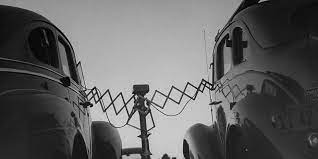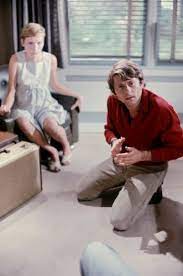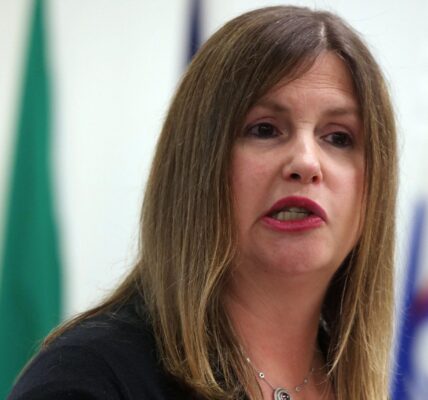Walter Murch grew up in bohemian New York, the son of an artist friend of Jackson Pollock. He learnt film alongside George Lucas at the University of Southern California, before editing and mixing sound on one of Francis Ford Coppola’s earlier films, The Rain People (1969).
Murch became a go-to man for both Lucas and Coppola throughout their respective careers, masterminding some of the most significant advancements in the fields of editing and sound design along the way, including the pioneering development of the industry standard 5.1 channel array on Apocalypse Now (1979). He talks to movieScopeabout the experience of making a film that has gone down in lore as one of the most ambitious creative journeys ever laid to celluloid.
How did you first find out about Apocalypse Now?
The first time I heard about it was in 1969. It was planned that George Lucas was going to direct it in 1971, after completing THX 1138,and John Milius was going to write it. It was then a very different idea to what [it] turned into. Lucas was going to shoot it in 16mm, largely in black-and-white, like the news footage from Vietnam that was appearing on people’s televisions every day. And he was going to shoot it in the Sacramento Delta in California and make it a very low-budget film.
The actual shoot is now legendary. When did it become clear what you were getting yourself into?
Well, Francis started working on the film right after Godfather II, ironically because he thought Godfather II was too complicated a film. He just wanted a simple action film to direct with three bankable stars so he could just sit back in his director’s chair and say action. I can remember him saying, ‘I just want to make a normal film rather than these complex, psychological dramas of The Godfather and The Conversation’. The Devil was listening, and he got a lot more than he bargained for.
When was your first involvement?
He started shooting in March ’76 and he came back in the summer, after the typhoon. I was in England editing Fred Zinnemann’s Julia that summer and he and I sat down and went over the script. He said, ‘Walter, what are we missing that we’re not taking advantage of?’ I felt there was a missing scene, which is a scene to show what it was the boat was actually supposed to be doing other than take Willard up the river. They were a patrol boat policing the river, so I wrote the scene when they stop the Sampan and the people get killed.
After that, I got a call from him in March ’77 saying he wanted me to do the sound on the film, and I said, ‘OK sure, but I won’t be done until August’. At that time Apocalypse Now was supposed to be in the theatres by December so I thought it was ambitious but was willing to see what happened. I ended up being one of four editors to work on the film at any one time. Julia had been a narrated film so I was very easy with the idea of narration, so I dug out an old version of Apocalypse Now that did have narration and revivified that, and that eventually led to Michael Herr being hired and the film being narrated.
And of course you developed the 5.1 surround sound mix for the film. How did that come about?
It was a spin-off of ideas that Francis had and that I elaborated on. He had heard a record by the composer Isao Tomita in [four-track] quadraphonic sound, which had enjoyed a bit of prominence in the mid-seventies, but by ’76 or ’77, it was beginning to not be so popular anymore. But Tomita had made a number of records using this technique and Francis thought, ‘This is great. I want this kind of immersion of the sound, to be surrounded by the sound’.
So he said to me, ‘I want the film to be in quadraphonic.’ And I thought, ‘Well, OK, I get the idea, but it’s going to be more complicated than that because his music doesn’t have any dialogue in it, and so I said, ‘Well, let’s make it quintaphonic. Let’s use five channels’. Then Francis said that he wanted the explosions to be felt in addition to being heard, and I thought, ‘OK, that’s another channel, so that’s six tracks’.
There had been the six track, 70 mm made, except they had five channels of signal behind the screen and one channel of audio in the surrounds. George Lucas had mixed Star Wars with the so-called baby-boom technique, which was to take two of the five speakers behind the screen and make them only low frequency, and so this 5.1 is a further elaboration of that with further split surrounds. Which is to say the sounds to your left and right behind you, and then three channels of sound behind the screen—left, centre and right—and then one channel going through specially made speakers that we brought into all the theatres by Meyer Sound in Berkeley, and they provided the super-low sound.
You were also sound designer for Coppola’s Conversation. How did that compare to Apocalypse Now?
Well, if Apocalypse Now is grand opera, then The Conversation is a string quartet. It’s an intimate story about a withdrawn character who’s suffering a crisis, whereas in Apocalypse Now blood is flying all over the place and decapitated heads are rolling down the aisle. In both of the films, sound is very important. It’s actually the subject in The Conversation because Henry is a sound recordist. Sound, if used correctly, is particularly effective at getting inside and hinting at getting inside of someone’s head, and in many scenes of both films sound has this interior quality.
What kind of influence has Francis Ford Coppola had on your career?
An overwhelming influence. He gave me my first job in feature films, and gave me a tremendous amount of rope to hang myself with. He left lots of decisions up to me. I was amazed; I thought directors told people what to do, but he just said, ‘Go ahead and do it’. We fed off each other. Our minds are pretty similar in many ways. We place different emphasis on things but we each understand exactly what we’re talking about and have done from the beginning. That’s not unusual. I think that’s the way Francis works with a lot of his collaborators. In fact, he might almost be collaborative to a fault, but that’s what makes it exciting working with him.
When did you decide that you wanted to build your career around sound design?
I was four! It’s hard to explain, it’s just an inbuilt thing. My ears stick out slightly, so maybe I hear the world in a slightly different way. I was trying to master language, as we all do at the age of four. I didn’t realise there was a limit to words so when I ran out of words I would make sound effects to fill in the gaps. I became known in the neighbourhood as Gerald McBoing-Boing, who was a cartoon character who made sound effects. When I heard about the tape recorder for the first time at the age of 10, I fell in love with it at long distance, and I loved it when I finally owned one. And the rest is history I guess. •












